Chapters
5 Religion
If someone were to ask you, “What religion are you?” how would you answer? For some, it might be a simple matter of identifying the denomination that is affiliated with the house of worship they attend regularly. For others, the answer might be a reflection of historical family ties to a particular belief system more than a statement of theological certainty. For still others, an increasing percentage globally as we’ll explore, the answer could be some variation of “nothing in particular.” There is a wide array of religious beliefs present in the world today, from global religions with hundreds of millions of adherents to isolated indigenous religions with only a handful of remaining practitioners. The vast assortment of religious buildings on our landscape or even the variety of religious texts in your local bookstore all speak to the idea that modern humans have a buffet of religious ideas and expressions at our disposal. Even within a particular religious community, individual beliefs and practices can be highly varied and it’s not uncommon for individuals to change denominations or change religions entirely—or to move from one religion to no religion.
It wasn’t always this way, though. On a local level at least, our religious landscape was once much more homogeneous. For most of human history, the question of religion wasn’t so much a matter of what you believed but rather, where you were and the particular rituals and practices that were customary in your tribe or village. For geographers, the where of religion is still critically important. Where are the hearth areas for the major world religions and why did they arise there? Where are the areas where religious adherence, that is, the percentage of people who follow a particular religion, is growing? Where is religious adherence declining? And why are these changes occurring? Where do we find religious conflict in the world and why? All of these questions will be explored in this chapter.
5.1 Introduction to Religion
As with languages and other forms of culture, there is a wide array of religious belief and expression in our world today. Geographers distinguish between two types of religions: ethnic religions, which are belief systems primarily associated with a particular ethnic group and generally tied to a particular geographic area, and universalizing religions, which attempt to appeal to all people and operate on a global scale. Because of their global reach, universalizing religions typically seek to convert new believers, while this is less common among ethnic religions. The three largest universalizing religions (see Figure 5.1) are Christianity, Islam, and Buddhism. Ethnic religions include Hinduism, Judaism, and Shinto. That said, sometimes there is more overlap between these distinctions than you might initially expect. Many Christian churches around the world, for example, have highly ethnic components, such as the Greek Orthodox Church. Similarly, some ethnic religions accept conversion and do not limit membership to a particular ethnic group, such as in some branches of Judaism.
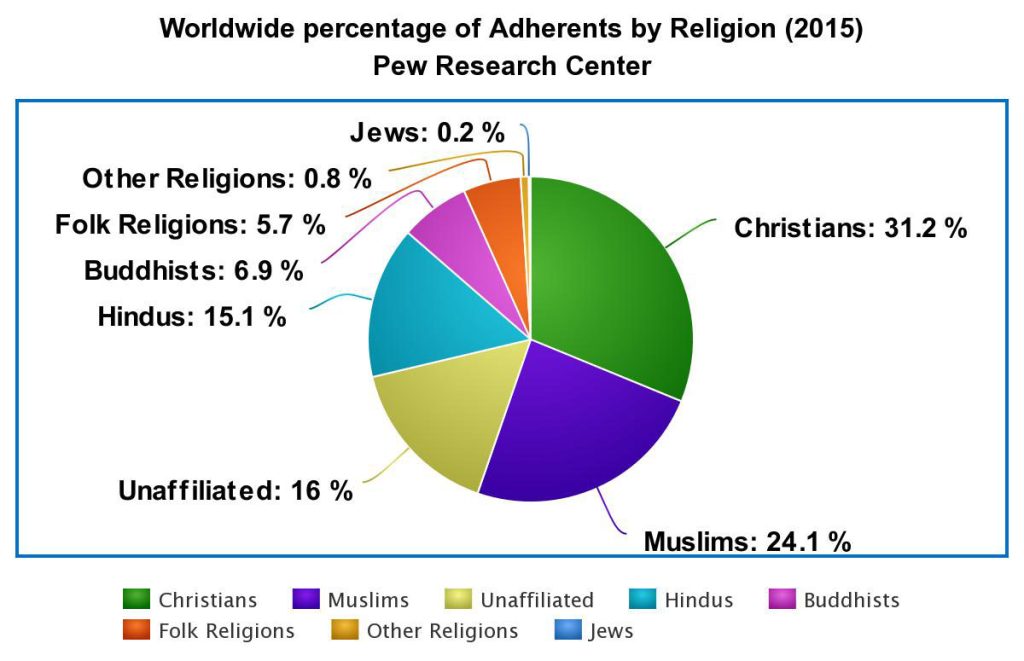
Defining religion presents its own challenge. How would you define “religion”? If it’s limited to a belief in a particular deity, then many large and well-known religions would be excluded, such as many expressions of Buddhism. If it’s a particular set of beliefs and practices, that definition might exclude religions like Hinduism which are more focused on individual religious expression and that have little or no over-arching dogma to which all believers ascribe. In truth, there is not one, all-encompassing definition of religion. A religion could perhaps be described as a system of beliefs, practices, worldviews, and/or ethics. Furthermore, an increasing number of people in the world are not religious, either atheist, meaning they do not believe in a God or gods, agnostic, meaning they believe you cannot know whether or not God exists, or simply nontheistic, believing it is unnecessary to have religious belief. And these categories themselves are not exclusive. One could be agnostic but find value in religious rituals. Or personally atheist but believe religious expression can be beneficial for people—or not. As we explore the world’s religions, keep in mind that just as your religious belief or non-belief likely differs from the exact beliefs of your neighbor, so too is there a wide array of individual beliefs and practices even among the major world’s belief systems.
Within the world’s religions, there are various divisions, known as branches, denominations, and sects. A branch is a large division within a religion. The three largest universalizing religions, and many ethnic religions as well, have different branches and these branches have distinctive geographic distributions. A denomination is a subgroup of a religion within a branch that has a common tradition and typically has a single administrative body. Finally, a sect is a further division within a religion that characterizes a smaller group that has split from an established denomination.
According to the Pew Research Center, as of 2010, around 84% of all people in the world identify with a particular religious group. While most belong to one of the largest religious groups, such as Christianity (over 30%), Islam (over 20%), or Hinduism (15%), another 6% or so belong to one of the hundreds of folk religions in the world, which include Native American traditions and traditional African religions. Another 16% of the world’s people are not affiliated with any particular religion.
5.2 Origins and Diffusion of Religion
Fundamentally, our ancestral forms of religious life were about connections—to those who came before us, to each other, to the land around us. In fact, the origins of the word “religion” itself stems from the very idea of connectivity: re– meaning “again” and the Latin stem leig meaning “to bind.” Our religious beliefs and practices thus originated as ways to connect with one another and with the wider realm of existence. Interestingly, we find some form of religious beliefs and practices in virtually all human cultures throughout history.
While there’s much that is unknown about ancient religious practices, simply by virtue of them being ancient and such little evidence surviving to today, one feature we find substantial evidence of our landscape is burial practices. Even long before the development of larger scale civilizations, there is evidence that ancient hominids carried out rituals related to the burial of the dead. At Shanidar Cave, located in the Kurdistan region of modern-day Iraq, for example, scientists have found evidence of intentional burial among Neanderthals who lived here between 60,000 and 70,000 years ago. For many researchers, the evidence of burial practices and associated ritual activities directly connects to the notion of ancestor worship, to include the belief in spirits or ghosts, a belief that is key aspect of many of the world’s religions both in historic times and today. So much of our ancient religion practice seems centered around our connection to the deceased, honoring them through burial or cremation practices and then maintaining this connection through rituals. For the living, these rituals of ancestral connection could help maintain family ties and continue important cultural traditions.
Each of these ancient forms of religious expression had distinct places of origin, each with unique geographic environments that influenced the particular forms of religious belief and expression. The religions, in turn, shaped the landscape. The heiau temples of Hawaii, for example, were constructed for a variety of purposes such as treating the sick, offering sacrifices, starting or ceasing rain, or giving birth (see Figure 5.2). For some religions, particularly those isolated by their geographic location, the religion and belief system remained closely tied to a particular area. For others, interaction with other groups led to the adoption of new beliefs or a synthesis of belief systems.

Religious beliefs spread around the world through various processes of diffusion. For many of the world’s universalizing religions, missionaries help transmit religious ideas through relocation diffusion. For Christianity, the spread of the Roman Empire accompanied a mix of contagious diffusion, through daily contact among believers in towns and nonbelievers in the countryside, and hierarchical diffusion, occurring as a result of Roman leaders embracing Christianity and proclaiming it the official religion. For Buddhism, the emperor Asoka was predominantly responsible for its diffusion. He was the emperor of the Magadhan Empire around 250 CE. His son led a mission to modern-day Sri Lanka and converted all the subjects to Buddhism. As the merchant routes spread, so too did the Buddhist faith. Islam spread with the conquest of the Islamic Empire and continues to grow today as a result of voluntary conversion, migration, and proselytization.
5.3 The World’s Religions
Hinduism
Hinduism is one of the oldest of the major world religions, dating back at least 4,000 years, and is the largest ethnic religion. There are over 1 billion followers today, mostly in India and in places where there are large Indian populations. If we look at the actual beliefs of Hinduism more closely, we see that the theology is very broad, without the rigid doctrines we might find in other religions. For Hindus, it is up to the individual to decide the best way to worship God.
Hinduism is polytheistic, meaning they believe in the existence of many gods. The three main deities are Brahma (the creator), Vishnu (the preserver of good and order), and Shiva (god of destruction and creation). Because Hinduism does not have a common creed, specific religious authority, or strict moral code, it is challenging to define and generalize Hindu belief and practice. In general, however, Hindu expression typically includes the belief in four key elements:
- karma, the notion that your deeds, good or bad, will return to you
- reincarnation, the belief that you are the sum of numerous past existences
- dharma, the laws and duties of being, which include restrains and observances
- worship, your communion with the gods
Each Hindu is free to worship in their own way. For example, some experience the divine through yoga—physical, mental, and spiritual practices that includes the form of physical yoga commonly known in the Western World as well as a variety of other disciplines. Others might worship through the study of Hindu sacred texts such as the Vedas, by maintaining a home altar to demonstrate devotion to a particular deity, or by making a pilgrimage to a sacred temple—or a combination of forms of worship. Figure 5.3 displays the Sri Ranganathaswamy Temple in Tamil Nadu, India, one of the largest religious complexes in the world that attracts over 1 million visitors during its annual 21-day festival.
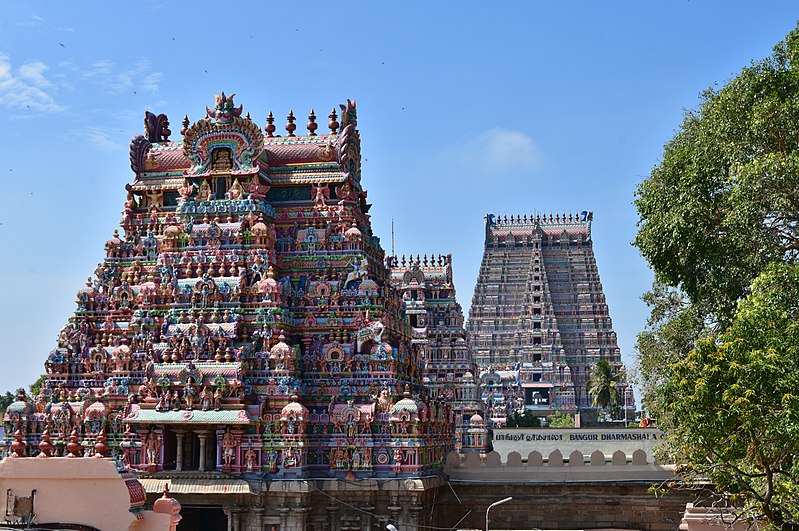
Buddhism
Buddhism stemmed from Hinduism and is now the world’s fourth-largest religion, with over 520 million adherents. Its founder, Siddhartha Gautama, was a Hindu who lived around 500-400 BCE and was born into an aristocratic family. While in his early years, he enjoyed a life of privilege, Siddhartha grew disenchanted with his life and the suffering he saw around him. He was ultimately searching for a way to end the cycle of death and rebirth, known as samsara. But how do you end this cycle? Siddhartha determined that there were four noble truths of our human existence: 1. Life is suffering. 2. The cause of suffering is desire. 3. There is a way to end suffering. 4. The way to end suffering is the eightfold path. These truths might seem pessimistic, but in many ways, they are realistic. Suffering is, indeed, universal, but for Siddhartha, suffering was a function of our denial of our true existence or our desire. Think about when you have suffered—were you upset over a lost love, sad that your pet died, or distressed over an injury or illness? For each of these cases, Siddhartha taught that by connecting our happiness with individuals, things, or our physical bodies, we ultimately suffer because these things are impermanent.
So how do you relieve suffering? By following the eightfold path, which includes: right view, right resolve, right speech, right conduct, right livelihood, right effort, right mindfulness, and right concentration. This path is intentionally vague, because in Buddhism, as in Hinduism, there is a multitude of possible paths. By following the eightfold path, one eventually enters nirvana, a state of absolute desirelessness and peacefulness, and is liberated from the cycle of samsara. Siddhartha is often called “the Buddha,” but this title really means one who has achieved enlightenment or “one who is awake” and could be applied to other enlightened beings as well.
Modern Buddhism is typically divided into two main branches: Theravada (meaning “the School of the Elders”) and Mahayana (the “Great Vehicle”). In the Theravada tradition, there is an emphasis on achieving nirvana, which may take many lifetimes to achieve and typically requires intensive study by Buddhist monks and nuns. For Mahayana Buddhists, there is a focus on the bodhisattva, person who has achieved enlightenment but who continues to work to help others achieve Buddhahood. Mahayana includes the Zen Buddhist tradition as well as Tibetan Buddhism. Theravada Buddhism is primarily practiced in Sri Lanka and in Southeast Asia. Mahayana is widespread in East Asia, Vietnam, and the Himalaya Mountain regions.
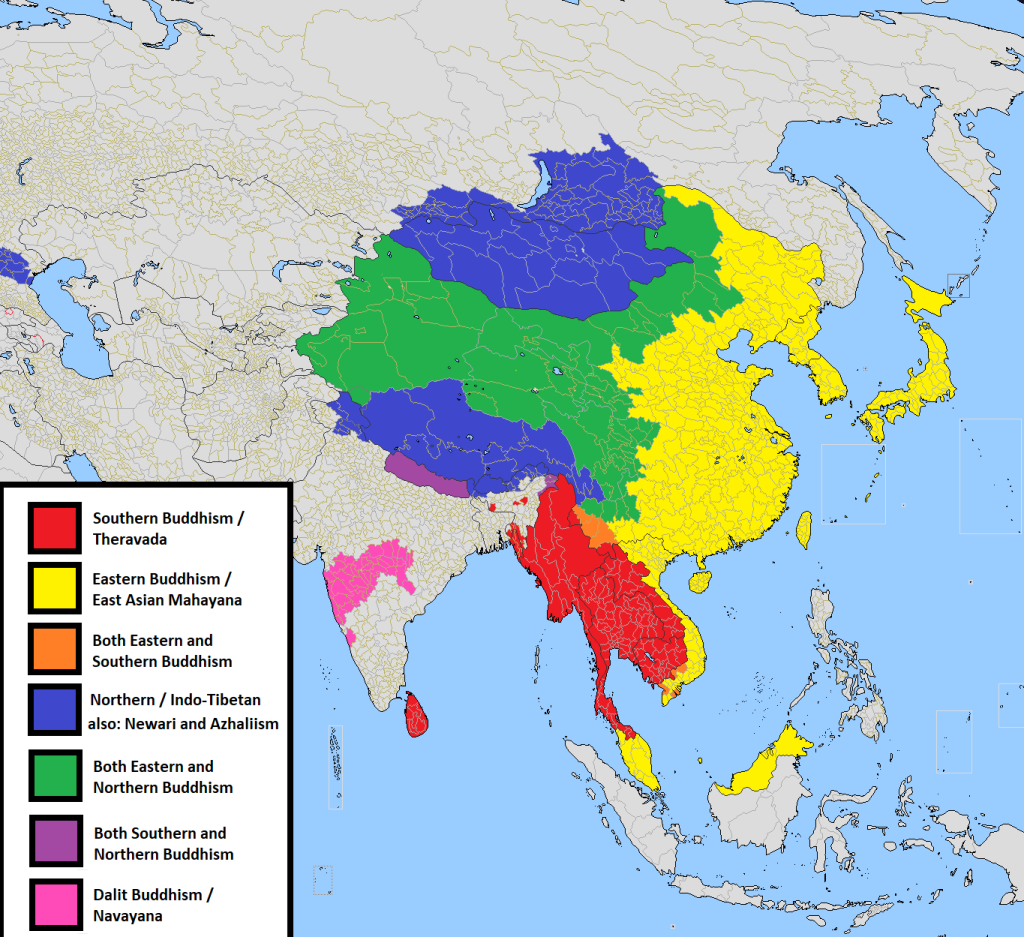
Judaism
Judaism is the oldest of the Abrahamic faiths, whose origins are traced to the patriarch Abraham. The Abrahamic faiths also includes Christianity, Islam, and other smaller religions such as Baháʼí. According to religious texts, Abraham had two sons: one, Ishmael with his wife’s servant Hagar; another, Isaac with his wife, Sarah. Muslims trace their ancestry through Ishmael, while Jews trace their lineage through Isaac.
Judaism, like Hinduism, is considered to be an ethnic religion. The religion has around 14 million adherents worldwide, most of whom live in the United States (home to 41% of Jews in the world today) or Israel (home to another 41%). Just over 10% of Jews live in Europe (around 1.4 million people), though this number was once far higher. In 1933, Europe was home to 9.5 million Jews; by 1945 two out of every three Jews in Europe had been killed by the Nazis in the Holocaust. This campaign of genocide targeted groups viewed by the Nazi regime as undesirable. Of the surviving Jews in Europe after World War II, most relocated elsewhere, including to the United States or Israel.
Judaism consists of a wide array of individual beliefs and practices that vary in their degree of observance. Judaism is a monotheistic religion, professing a belief in one God. The holiest book in Judaism is the Torah. The Torah refers to the first five books of the Hebrew Bible: Genesis, Exodus, Leviticus, Numbers and Deuteronomy. (Note that the Hebrew Bible is referred to as the “Old” Testament in Christianity—but it’s only “old” if you think there’s something new.)
Historically, Judaism was a highly geographic system of rituals centered around the Temple in Jerusalem and the worship of the God of Israel. To be Jewish was simply to engage in these rituals and sacrifices and to align with the belief that God is one and is concerned with our actions. The First Temple was destroyed in 586 BCE by the Babylonians and the rebuilt Second Temple was destroyed in 70 CE by the Romans.
The destruction of the Second Temple marked a critical turning point in Jewish theology. Without the temple, and the subsequent Jewish diaspora as Jews moved away from their ancestral homeland, there was a fundamental question of what it means to be Jewish. Does being Jewish mean setting yourself apart from the cultures where you might find yourself to be living within and wearing particular articles of clothing and strictly observing certain commandments that may be seen as in contrast to the larger society? Or is it adapting beliefs and customs in a way that allows followers to assimilate? And if so, what beliefs and customs can be adapted and which should be left unchanged? If strict observance is preferred, without the rituals surrounding temple worship, which observances are critical facets of what it means to be Jewish? Rabbinic Judaism, centered on the oral tradition of rabbis, developed as Jews struggled to answer these core questions. Synagogues, too, developed, as Judaism shifted from the belief that God dwelled within the temple to the idea that God dwells wherever Jews are gathered (see Figure 5.4). Today, Judaism has several branches including Orthodox, Conservative, Reform, and Reconstructionist.
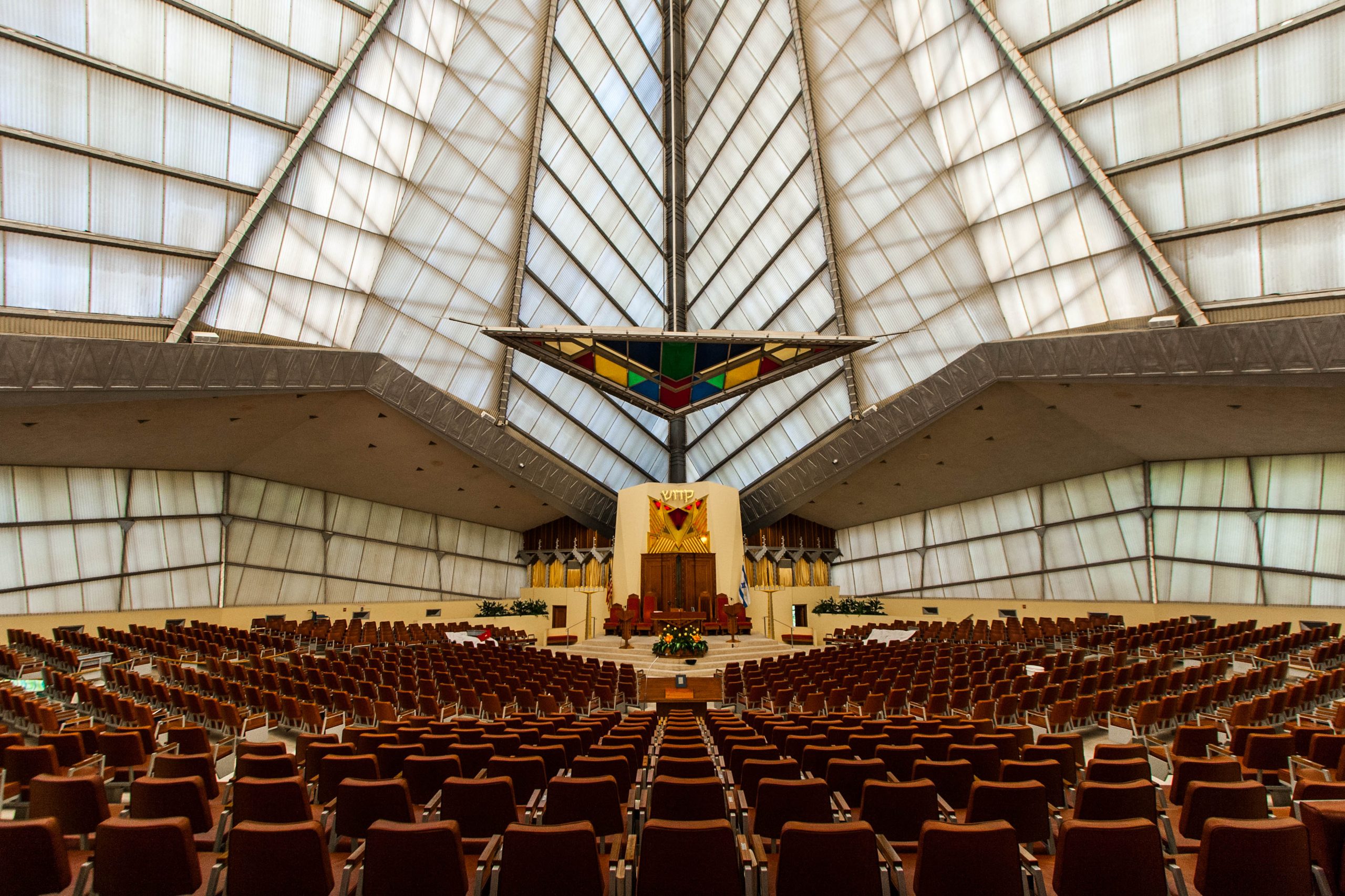
Christianity
Christianity historically began as a reformation of Judaism. Jesus, who was Jewish, is considered to be the “messiah” or “anointed one” by his followers. He was born around 4 BCE and was killed by the Romans most likely in either 30 or 33 CE, only a few decades before they destroyed the Second Temple in Jerusalem. The Romans were worried that he would incite a revolt and crucified him, a manner of death that was generally reserved for political prisoners. His death is discussed in the Biblical gospels as well as in other historical sources. Early Christianity was very much an offshoot of Judaism and arose during a time when Jews, displaced by conquest or living under the rule of various empires, wrestled with the question of Jewish identity as just mentioned. Christian belief and practice and texts were all rooted in Jewish theology. Eventually, as Christianity spread, it diverged along the lines of language families, to include Latin speakers, Greek speakers, and speakers of Middle Eastern languages like Aramaic, which was spoken by Jesus himself. The primary branches we find in Christianity, and all of the denominations and sects we see today, evolved from this early split based on geography and language.
Today, Christianity is the largest religious group with around one-third of all people adhering to some form of Christianity. Christian belief is quite varied, particularly with regards to Biblical interpretation. Some take a more literal interpretation of the Bible as the authoritative word of God, while others look at the Bible as more metaphorical, part of an evolving conversation with the divine. Christianity has three major branches: Roman Catholicism, Eastern Orthodoxy, and Protestantism. Roman Catholicism is the oldest branch of Christianity. Catholics believe that God conveys his grace to humanity through the seven sacraments: Baptism, Confirmation, Penance, Anointing of the Sick, Matrimony, Holy Orders, and most importantly, the Eucharist. Eastern Orthodoxy developed as a result of a split in 1054 CE known as The Great Schism. Russian Orthodox makes up 40% of this branch. The Protestant reformation began with Martin Luther on Oct. 31, 1517. Luther believed that individuals should be able to directly communicate with God, without the need for a priest as an intercessor, and that grace was given through faith. Historically Christianity was closely tied to Europe (around two-thirds of the world’s Christians lived in Europe as of 1910) and Christian practice was often a reflection of the larger empire or culture within which it was situated. Today, however, Christians are now spread across the globe and almost a quarter of all Christians now live in sub-Saharan Africa.
Islam
Islam is yet another of the Abrahamic faiths and is the second-largest religion in the world, behind Christianity, but is the fastest growing, primarily because it is found in places with high natural increase rates. Like the other religions we’ve explored, Islam is highly specific to local geographies. Islam is a monotheistic religion whose adherents believe in one God, Allah, and believe that Muhammad is a prophet of God. Note that “Allah,” the term for God used in Islam, simply means “the God” in Arabic, just as “Elohim” similarly does in Hebrew. While outsiders sometimes seem to view Allah as “some other God,” certainly Muslims believe that Allah is the same God as the deity found in the Jewish and Christian traditions.
The word Islam comes from the root word SLM meaning “submission,” and this core principle is essential to understanding Islam. Muslims believe that submission to Allah is key and every Muslim belief centers around this principle. Muhammad, who lived from 570 to 632 CE, was an orphan raised by relatives. He would often spend time meditating and praying in the caves near his hometown of Mecca, in what is now the state of Saudi Arabia. During one of these prayer sessions, he is believed by Muslims to have received the first in a series of revelations. These revelations, believed to be recitations directly from Allah, are compiled in the Qur’an. Muhammad is thus seen as a prophet in Islam, alongside other prophets including Abraham (Ibrahim in Arabic), Noah (Nuh), Moses (Musa), and Jesus (Isa).
There are five core practices in Islam, known as the five pillars. These are:
- shahada, the statement of faith: “There is no god but Allah and Muhammad is the messenger of Allah”
- salat, prayer five times a day
- zakat, the giving of alms: 2.5% of all assets, not just income
- sawm, a month of daytime fasting during the month of Ramadan; no food, drink, or sex during daylight
- hajj, one pilgrimage to Mecca (see Figure 5.5) for those who are able
Some often mistakenly think that jihad is one of the five pillars, but it is not. Furthermore, jihad actually means a “holy struggle” and is generally seen as a metaphorical struggle with one’s faith and doubts, rather than a physical struggle against other individuals.
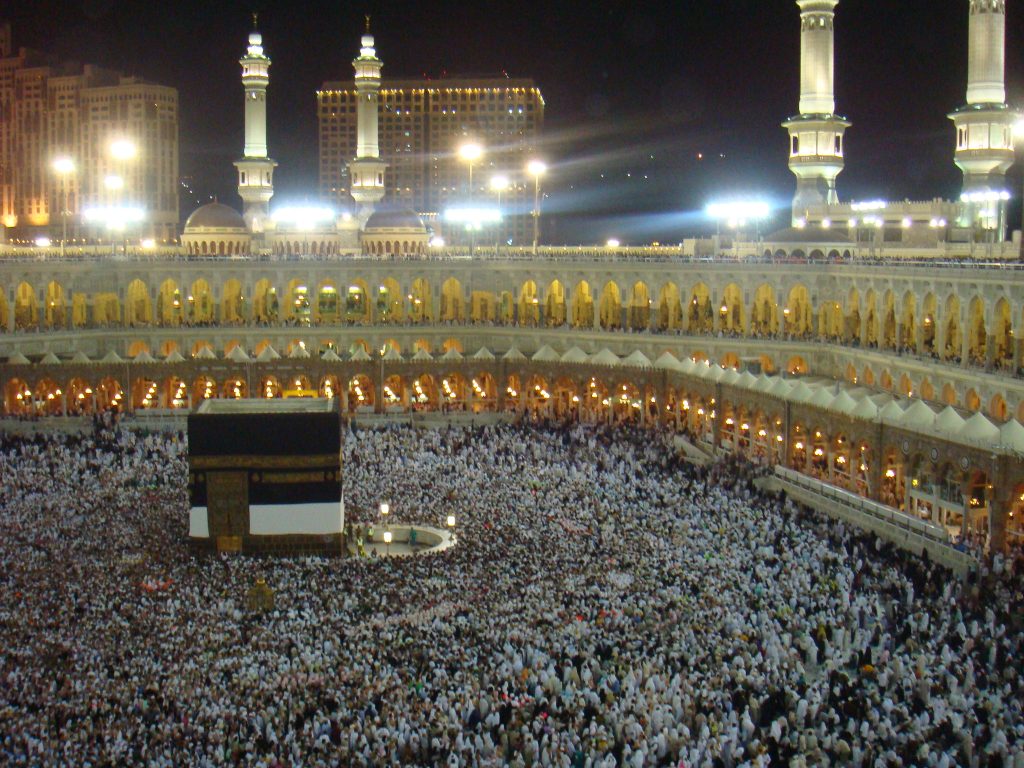
Today, there are approximately 1.9 billion followers of Islam. Though there are majority Muslim countries across parts of North Africa, Sub-Saharan Africa, and Southwest Asia, most Muslims actually live in South Asia, with Indonesia having the largest Muslim population in the world. Islam can be broadly divided into two main branches: Sunni (around 85% of adherents) and Shi’a (around 15%) (see Figure 5.6). These groups split over who should be caliph, the leader of Islam, after the death of Muhammad, which was challenging as Muhammad had no male heir. The Shi’a believed that the successor should be a direct descendant of Muhammad, who they viewed as his son-in-law Ali (Shīʻatu ʻAlī means “followers of Ali”). The Sunni, on the other hand, believed that the leader did not have to be hereditary, and were more interested in the leader’s ability and charisma. Like Judaism and Christianity, individual belief and practices vary among Muslims. Some Muslim women believe in the wearing of head coverings, known as hijab, and modest dress, while others do not. As with other religions, there are also more fundamentalist groups within Islam who hold a strict, literal interpretation of religious scripture.
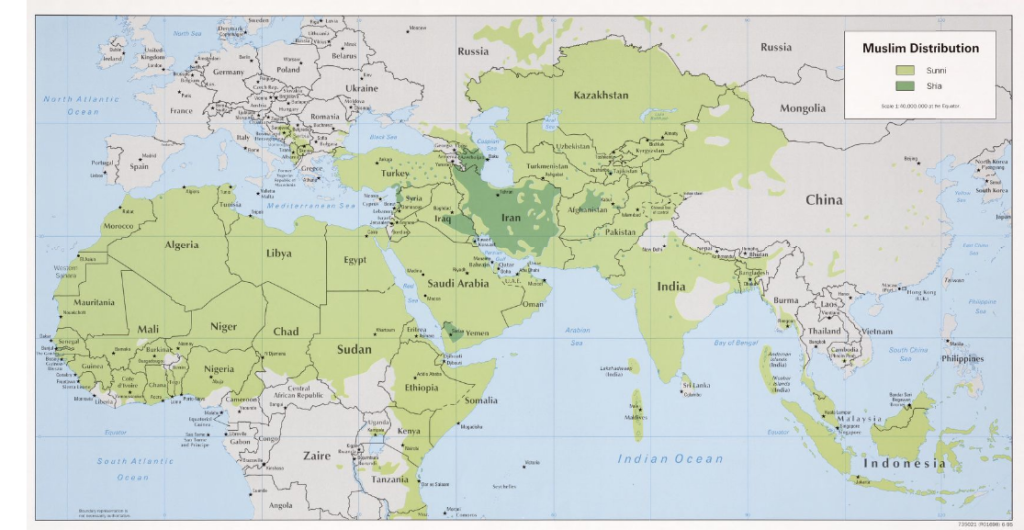
Other Religions and Beliefs
There are numerous other world religions outside of the major religions mentioned. The Baháʼí Faith, another Abrahamic Religion, is essentially a synthesis of Judaism, Christianity, and Islam and promotes the unity of all people and the value in all religious expressions. Sikhism is a fusion of Hinduism and Islam based on the teachings of Guru Nanak, who lived from 1469-1539 CE. Taoism is a religion that emphasizes living in harmony with the Tao, the ultimate principle underlying reality, and is widely practiced across East Asia. Within Japan, we find the ancient religion of Shinto, a polytheistic religion whose followers believe that a divine power inhabits all things, known as animism. Most people in Japan actually practice a combination of both Shinto and Buddhist beliefs. Animistic beliefs are also common across traditional African religions which are practiced by around 100 million people. Pinpointing exactly how many individual religions exist in the world is challenging, but researchers estimate that there is somewhere around 10,000 distinct religions worldwide. Some are only practiced by a handful of people in a small community.
In addition, an increasing number of people in the world are considered to be among the so-called “religious nones,” meaning those who are unaffiliated with any belief system. Within the United States, around 16% of U.S. adults identified as “nothing in particular” in 2007 on a Pew Research survey. By 2020-2021, that figure had risen to 29%. Across Europe, while most people identify themselves as Christian, relatively few regularly attend church and here too there has been a rise of adults describing themselves as religiously unaffiliated. Note that this category of religiously unaffiliated encompasses a broad array of individual beliefs, from atheism to nontheism and so on, as well the belief in a religious tradition without adhering to a particular organization.
5.4 Sacred Landscapes and Architecture
As human geographers, we can explore the paths of religions as they grew and spread, but we can also examine the geography of religion on a more local scale by exploring sacred sites. Religious structures play a critical role in bringing people together and both reflect and reinforce underlying religious beliefs. These places often relate to a founder’s life or to historical events in the religion’s history. Each of the world’s religions has sites that they consider to be holy. In some areas, these holy sites are located in close proximity to the holy sites of other faiths, as we’ll see below.
The most visible marker of religion on the landscape, perhaps, is the house of worship. Houses of worship typically include elements that reflect the religion, such as symbols of theology or doctrine, but also may incorporate markers of local geography. The world’s second-largest Hindu temple is actually located in New Jersey and in some ways, looks similar to Hindu temples you might find across India, but its roof and stonework look more reminiscent of a North American building (see Figure 5.7).
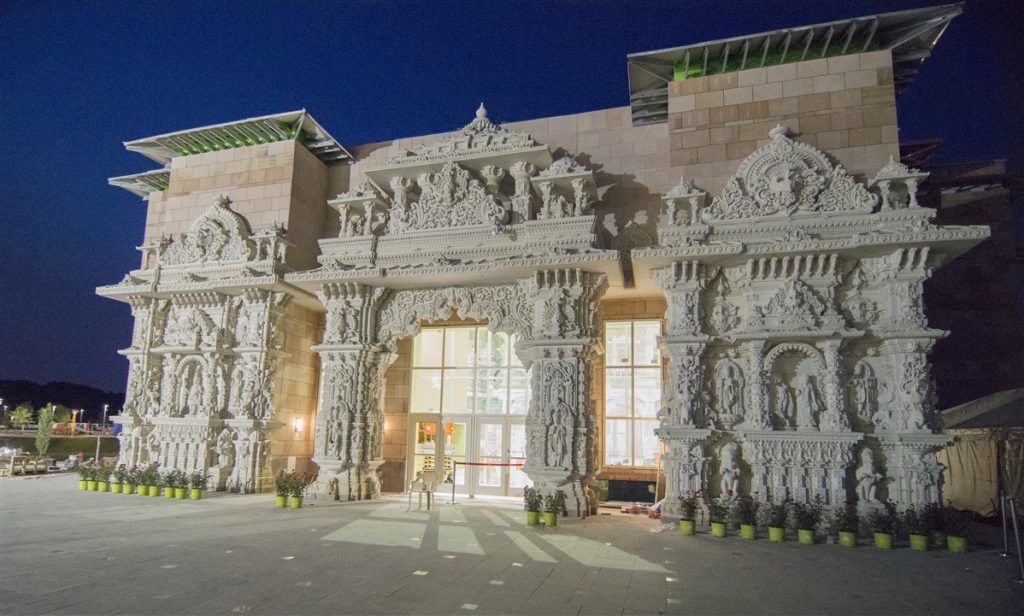
Many houses of worship, particularly those built many centuries ago, were designed specifically to elicit a sense of awe in those who passed through the doors and may have been the tallest structures on the landscape, serving as beacons of faith. The Ulm Minster, for example, a Lutheran church located in Ulm, Germany, is the tallest church in the world. Its construction started in the late 1300s and continued until the late 1800s. Even today, it is the tallest structure in the city by far (see Figure 5.8). Among the most-visited tourist sites in the world, a significant number are religious structures, such as St. Peter’s Basilica in Vatican City, the Parthenon in Athens, and the Pyramid of the Moon in Mexico. This speaks to the idea that our religious structures were designed to draw people in through their intricate artwork and often towering presence on the landscape. Less obvious but no less important are smaller scale sacred spaces, such as prayer gardens or home altars. These sites may be less obvious on the landscape but often more exemplify daily religious practice.
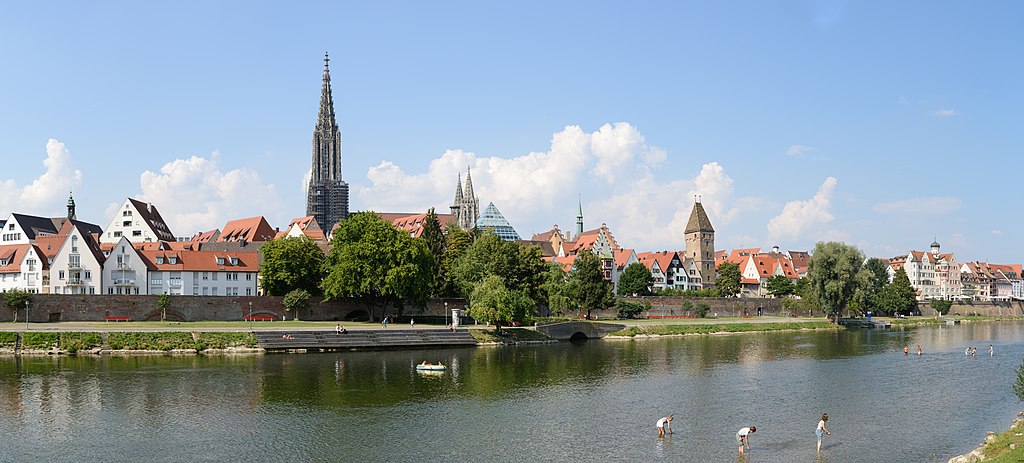
5.5 Religious Conflict
While religion can be a source of solace and unity, it has also unfortunately fueled conflicts, and these conflicts are often tied to local geographies. The proximity of some religious hearths to one another has sometimes led to opposing groups fighting over control of a space. Nowhere is this more evident than in the modern state of Israel. In Jerusalem, a city in Israel, the holiest site for the Jewish people, the remnants of the destroyed Second Temple, is located right next to one of the holiest sites for Muslims, the Dome of the Rock where Muhammad is believed to have ascended into heaven (see Figure 5.9). Christians, too, often make pilgrimages to Jerusalem to visit the historical sites where Jesus walked and preached. This region has been the site of broader territorial conflicts for centuries.

Following World War I, Britain had secured a mandate to administer the then-territory of Palestine. The Balfour declaration in 1917 by Great Britain stated that Britain supported the concept of a Jewish homeland and led to a mass of Jewish immigration to Palestine, and subsequently to rising conflicts between Jews and Arabs in the region. There had been continued calls for a Jewish homeland at least since the late 1800s, but these calls took renewed urgency following World War II and the murder of approximately six million Jews. In some countries, huge percentages of the Jewish population were killed, including 90% of the entire Jewish population of Poland and over three-quarters of the Jewish population of Slovakia. The United Nations ultimately settled on a plan to partition the territory of Palestine into an Arab state, a Jewish state, and U.N.-administered city of Jerusalem (see Figure 5.10). The surrounding Arab states immediately opposed this plan and armed clashes broke out. Ultimately, Israel declared independence in 1948 and subsequently gained additional territory, including the areas that were intended to be part of the Arab state, after a number of wars with surrounding countries.
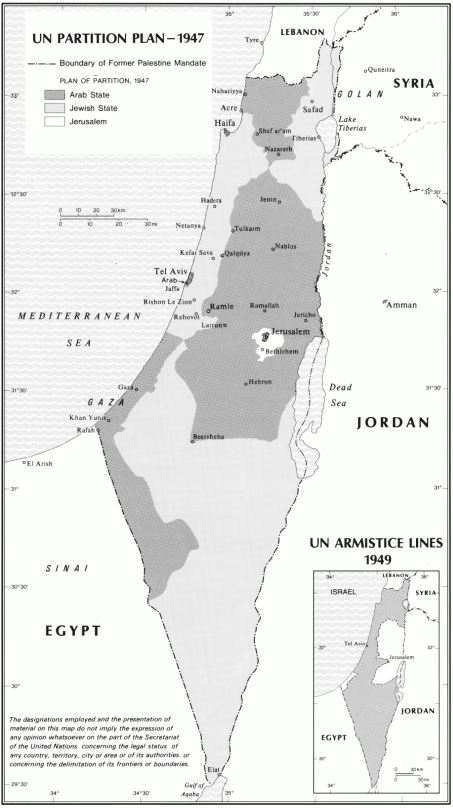
It might be useful to pause a moment and consider why the Jewish people would demand a homeland. If you are the minority everywhere, then there’s really nowhere you’d be completely safe from persecution. If you’re the minority everywhere, then there is a lingering fear that the Holocaust could happen again. Furthermore, Jewish text states that this land was given to them by God, so Jews view this land as their divine right. On the other hand, can you see why Palestinians, and the surrounding Arab states would not support the partition? While you might support a Jewish homeland intellectually, it’s hard to give up your land. And Palestinian Arabs have lived here for centuries. So, on the one hand, you have a group claiming the region because it’s their historical homeland for hundreds of years and on the other, a group claiming it because it was their homeland years earlier and because they believe their religious texts decrees that it is their land. Furthermore, recall that both Judaism and Islam are both Abrahamic faiths and are quite similar, especially when you compare them to other religious traditions. As is often the case with territorial disputes, this conflict stems from a combination of ethnic and religious factors.
In the current situation, there is the independent state of Israel and within that state, Palestinian-inhabited areas, though there is no official state or territory of Palestine (see Figure 5.11). Within the United Nations, Palestine is included as a “non-member observer state,” though many have fought for Palestinian statehood. Complicating the situation further is that there are two Palestinian areas, one in the Gaza Strip and the other in the West Bank. In the West Bank, we also find Israeli settlements. Both Palestinian areas are walled off from the rest of Israel and Palestinians who wish to cross must go through lengthy checkpoints, if they are allowed to cross at all. The Israeli government maintains that these walls and precautions are for the safety of Israeli citizens. Over half of the population of Gaza lives below the poverty line and residents of Gaza maintain that the Israeli blockade of the area has prevented needed goods and services from entering the area. In addition, the presence of Israeli settlements further complicates the peace process because it would be challenging to return to the U.N. partition plan with substantial numbers of Israelis living in what was intended to be an Arab state. Some, including the United Nations and the European Union, view these settlements as a violation of international law. The Israeli government, however, views these settlements as legal since they maintain to have a legal claim to the entire territory.
The conflict between Israel and Palestine has been marked by cycles of violence, where periods of relative calm are interrupted by escalations. These cycles often involve retaliatory actions, rocket fire, airstrikes, and ground operations, leading to significant loss of life on both sides. The most recent escalation, which began on October 7, 2023 with a terrorist attack that killed over 1,100 Israelis and sparked a major military response, lead to widespread destruction in Gaza and significant civilian casualties. This escalation, like many before it, underscores the deep-rooted tensions and complexities of the region.
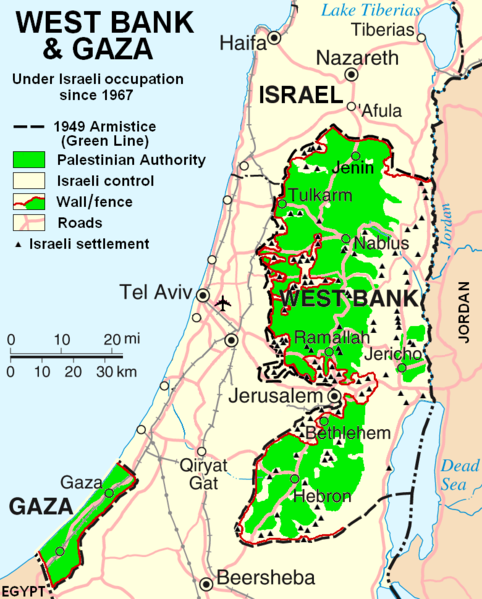
Elsewhere, the presence of differing religious groups can similarly be connected to underlying ethnic and political tensions. The Troubles in Northern Ireland, for example, was a period of conflict between Protestants and Catholics that lasted 30 years, finally ceasing in 1998. Conflict continues in the region of Jammu and Kashmir between Hindus in India and Muslims in Pakistan. In Nigeria, there have been clashes between Muslim herders and Christian farmers. Historically, where we have seen two religions collide, particularly when we have also seen disputes over resources and/or governance, we have also seen conflict.
5.5 Modern Religious Changes and Adaptations
Globally, a challenge we’re likely to continue facing is the rise of secularism (non-religion) alongside areas where conservative religion is flourishing. Rising secularism in North America and in most of Europe has sometimes been at odds with the the deep religious views expressed by many in the developing world, the same areas that were once colonized and controlled by the West. These developed areas may view encroaching secularism as synonymous with a broader loss of traditional cultural values. In addition, secularism is not uniform across North America and Europe. Some regions within these continents have seen rising religious fervor, while at the same time other regions, such as urban areas, have seen declines in religious adherence. This is often exemplified by candidates for political office, who may attempt to appeal to a particular voting base by either invoking religion or shying away from it.
More broadly, there has also been a resurgence of religious fundamentalism, which some groups see as a way of keeping their particular culture distinct from an increasingly “Western,” secular society. The Taliban, for example, has imposed very strict laws which scholars note are not in line with the Qur’an but Taliban adherents see as a method of maintaining their interpretation of Islam free from global influence. Christian fundamentalists, who believe in a strict interpretation of Biblical scripture, have become increasingly politically active in recent decades, particularly within the United States, and advocate for the integration of Christian theological doctrines into wider society.
Religions themselves have changed and adapted over time. While the Christianity that first spread to Africa was very much a Westernized, European religion, modern African Christianity has sought to decolonize and de-Westernize it, in essence shifting from a Christianized Africa to an Africanized Christianity. Virtual forms of religion and belief systems have also proliferated, some representing more traditional organizations and others seeking to connect with those who may have shifted to religiously unaffiliated. The top 10 meditation apps brought in $195 million in revenue in 2019. Religious communities shifted online during the Covid-19 pandemic, and most have retained some virtual offerings.
As religious adherence has declined, questions have arisen regarding what might fill the void. That is, in the absence of religious organizations, where will people go to seek connection and meaning, and how will religious organizations adapt to a changing society? If we return to the etymology of the word religion, we might consider the ways in which we can reconnect with each other and with the world around us to help cultivate shared meaning. Rituals of connection include a wide variety of activities, to include rituals developed within family relationships (which can of course mean chosen families or families we’re born into). For some, these rituals may include those with religious significance that have deep-seated historical meanings, but for others, they might include the informal rituals of connection that we develop that are just as important at creating a sense of a shared philosophy and values. As our world, and our religious systems, continue to change and evolve, there will be new opportunities for us to connect and reconnect with each other and with our natural environment. Just as our ancestors sat around fires telling stories and building a sense of a shared community history and values, we as modern humans can recognize the importance in continuing to tell these stories and continuing to situate ourselves within the larger context of human existence.
a belief system primarily associated with a particular ethnic group and generally tied to a particular geographic area
a lack of belief in God/gods
the belief that the existence of God/gods cannot be proven
not having a belief in God/gods
a large division within a religion
a subgroup of a religion within a branch that has a common tradition and typically has a single administrative body
a division within a religion that characterizes a smaller group that has split from an established denomination
a member of a religious group who helps diffuse and promote their religion in an area
the belief in many gods
the belief in one God
a group of people who are living outside of their geographic homeland
a form of a religion that is characterized by a strict, literal interpretation of scripture and a return to the religion's core principles
the belief that objects, people, and creatures all possess a divine essence
the principle that promotes the separation of religion from government, politics, and public affairs

